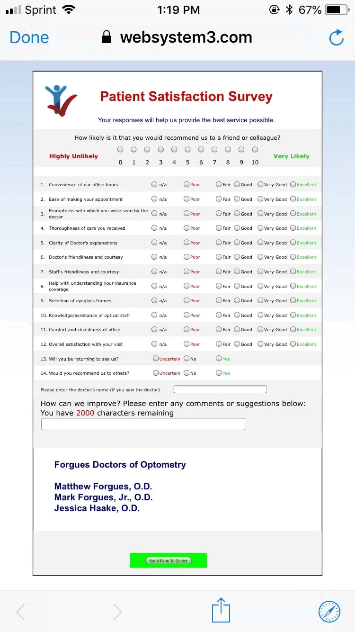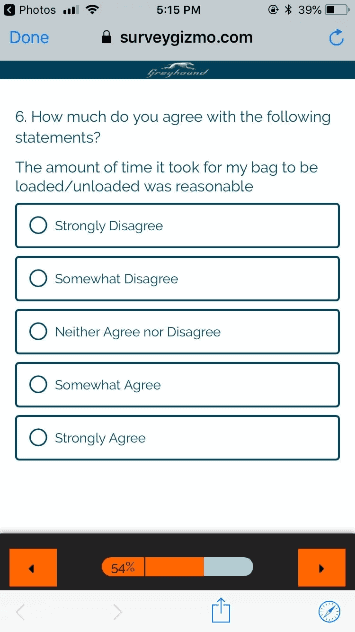Survey Vs Questionnaire. In marketing these are two tools used constantly and as such is of out most importance to know them. What are they? How do they differ from one another?
Table of Contents
Typically, when you use a questionnaire, you collect data based in the questions in it. A Questionnaire should not be used to find trends, behaviors or other knowledge. Just basic data from the questions.
In the other hand a survey is also employed as a means to get data. Is based on the same principle, a list of question. However, the main difference is what the purpose is, in this case it has statistical connotations.
First let’s begin by saying that a survey is very different from a questionnaire, and should not be used interchangeably.

Sometimes the context in which these terms are used can lead to be acceptable to use one for the other. This is really not the case in a professional environment, as we explained. One has statistical connotations and the other doesn’t.
If you’re diving deep, or not so deep maybe, into marketing or research you better know the difference between the terms.
A questionnaire is a list of written questions made with the intent of getting information about an individual. It is, by nature, limited to one individual, or one household, or one team. But remember, just one. As you can see, is not a good tool for fata analysis or wide scope information gathering.
A survey is also a list of questions, but is more focused in gathering data for analysis. They might seem similar at the surface but the questions employed are wildly different. Surveys look for trends in a social group, or in a population. In essence large scale social systems.
In short, we can briefly point out the following.
Questionnaire = limited range, based on questions.
Survey = Wide range, based on questions.
Nothing shows what something really is like the object itself. With that in mind let’s see an example of a questionnaire.
Remember the last time you went to a doctor to get a health check? Or how about the little form you have to fill-out while waiting for attention at a hospital?
Well those are questionnaires. And with that information your data, or someone’s, will be used to assert the what can and can’t be done for you, in short it provides brief and pertinent information about the persons that fills it.
This goes from diagnosing a disease to a clear picture of your medical history. But with the information of just one person you couldn’t possibly attest to an entire population, right? Well there is the difference.
In case you haven’t seen one yet or just don’t remember. A questionnaire looks like this.

Think of it more like a project, where one list of questions is just a small part of the whole thing. It is done with the purpose of reaching a clear conclusion of a subject affecting a large number of people or systems.
So, basically is the big brother of a questionnaire.
It helps you get more information out of the general public, regarding trends and social behavior, in most cases. This could be done using a demographic approach. It can also be used to find out the level of commitment your staff has. It is also a great tool for market research, not to mention a very used one.
So, to help jog your memory or in case you’ve never seen one. This is what a survey usually looks like.

Simply put, lack of information. To be fair the two are very similar, actually other than their aim or scope and the nature of the questions, they could be considered almost the same thing.
Often both, the survey and the questionnaire, are set apart only by researchers and marketing engaged people. But todays world is a world of information, and this difference is being more known today that it was 40 years ago.
The more individuals and organizations are actively trying to obtain information from you and at the same time handle their own information. The more people are going to be aware of what they are and what to use each for.
Despite all of this misinformation always lurks in the shadows, and it’s been common practice to interchange one and for the other.

Frustrating, I know. If you want to be even more confused you might want to know that there’s even a “survey questionnaire”. It’s a mix between the two. It begins as a questionnaire and as it advances it becomes a survey.
For instance, let’s say you want to know how your employs feel about you, and you’re using a “Likert scale questionnaires”. Through this mean you can almost directly ask each of them how they feel about you or some other thing, in a scale of 1 to 5. After that you get the mean value out all and then get a clearer picture of how the average employ feels about you.
To help clarify this, remember the example about the hospital questionnaire? Let’s use that. What would happen if we exchange the questionnaire for a survey? Sure, most people will be fine, but will they all?
With a survey you can know that almost no body in town suffers from allergy to “medicine A”, but just so happens you do. The doctors not having this information give it to you and now you all have a bigger problem in hands.
To be fair, many questionnaires are used for large scale research. But now you see the problem if we mix the two up? The doctors won’t have information about your particular allergy, they’ll only know that the majority is not affected by it.
Nothing helps learning about something new like putting it to the test. And in this case, you get to “test” others. Maybe try creating a survey about a topic of social interest and passing it to your friends. Or maybe you can gather personal data out of one of them using a questionnaire.
To help you with this you can use a simple and efficient questionnaire and survey maker online. One such as UseForm.
Keep in mind that in order to get the information you want; you have to ask the right questions in the appropriate manner. This can even be done discretely in a casual conversation. If you still don’t know how to take that first step in doing it, then we can help you with that.
Either the case or scope of your project, here are a few tips to help.
Often a messy survey will ask questions which answers have no correlation to the data you want to obtain. Of course, the person answering doesn’t know this at first glance. But it will help you to be more focused about a topic.
Nobody likes a rude question; the users of a survey or questionnaire are no exception to this. You have to find a balance between being straight forward but not too direct and being gentle but not afraid to ask.
A really long questionnaire is tire some and if is not for a really good reason people often won’t do it until the end. A good length may vary between different topics and projects, but do keep this in mind. Surveys are usually longer than questionnaires, as the questions are not too lengthy, they’re easier to answer.
Remember one tries to get information about one individual and the other about the whole of a group. Ans as the range differs so does the questions that are pertinent to ask in each case.
In the case of surveys let’s say you want information of the people that live in the U.S, but just about them. Then your data might be compromised by having someone in Brazil take your survey.
Make sure you’re getting to your target audience and nobody else.
This will greatly help your surveys to be more accurate. People tend to feel protected and more honest when their identities are to remain anonymous. If you want to check this just swing by an anonymous blog, you’ll see a lot of comments that could be considered controversial in a public place.

If you need more help with this you can resort to an online service. They can come in many shapes and sized, one that we recommend is UseForm.
This site will help you build any-kind of form you need, among which there are survey and questionnaires. After is done you can even post it online or download it. This is all done online and this website offers a great tool to achieve a clean and effective survey or questionnaire.